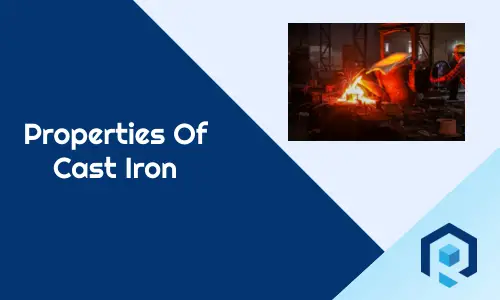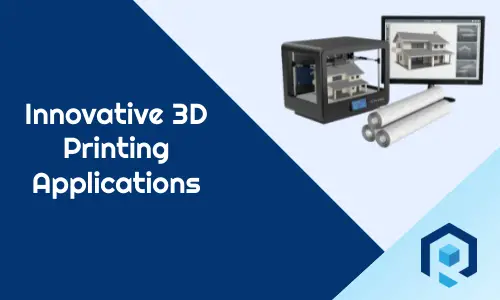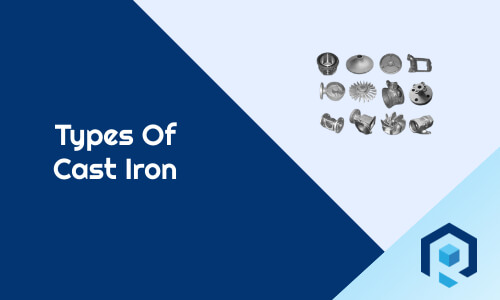The Extrusion Process is a metal-forming method that uses dies and an external compressive force to modify the shape of metal. This method makes it easy to make any complicated shape. The extrusion process is widely used in producing hollow pipes and tubes.
In this article will discuss the extrusion process, its working principles, types, and advantages and disadvantages.
What is the Extrusion process?
Extrusion is a method of producing items with a definite cross-sectional profile by forcing material through a die with the desired cross-section.
Its two key advantages over other manufacturing methods are its capacity to build very complicated cross-sections and to work with fragile materials because only compressive and shear stresses are encountered.
It also produces a good surface polish and allows for significant form freedom during the design phase.
This procedure is identical to the drawing procedure, except that the drawing procedure employs tensile stress to expand the metal workpiece. Compared to drawing in a single pass, the compressive force allows for more significant distortion. The most often extruded materials are plastic and aluminium.
Extrusion of plastic is called extrusion moulding and it is one of the widely used molding methods in the industry
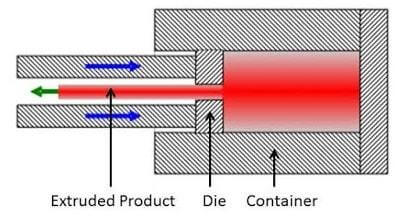
Working Principle of Extrusion Process
A cylindrical container holds the heated metal before it is placed into the billet. The container’s opening is cut from a die plate permanently attached to one end.
The metal billet is compressed against the container walls and the die plate from the opposite end using a plunger or ram, causing it to flow through the die aperture and take on the contours of the die.
As the metal comes out of the die during the extrusion process, it is picked up by the metal-handling system.
Extruding provides for the fabrication of components with a homogeneous cross-section across their entire length. Unlike rolling, which requires multiple passes, extrusion requires one.
In most cases, brittle materials can be extruded with little difficulty. In other words, you can make angles and corners that are both acute and re-entrant.
Aluminium extrusions are very popular in the industry for making pipes and other hollow shapes.
Types of Extrusion Process
The extrusion process is classified mainly into two types based on whether it is carried out at room temperature or under heat.
- Hot Extrusion Process
- Cold Extrusion Process
1. Hot Extrusion Process
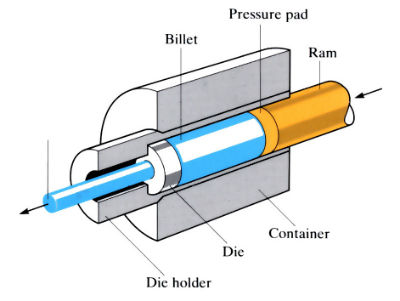
The hot extrusion process is carried out above the material’s recrystallization temperature. It prevents the material from hardening and makes it simpler to force through the die.
Most horizontal hydraulic presses, weighing between 230 and 11,000 metric tons, carry out the hot extrusion process (250 to 12,130 short tons). Their pressures range between 30 and 700 MPA. Thus, lubrication is necessary. Glass powder can be used for higher temperature extrusions, while oil or graphite can be used for lower temperature extrusions.
Metals such as magnesium, aluminum, copper, steel, titanium, nickel, and refractory alloys might require different temperatures during hot extrusion. During the hot extrusion process, each of these demands a different temperature.
Hot extrusion processes are classified into two types:
1A. Forward or Direct Extrusion:
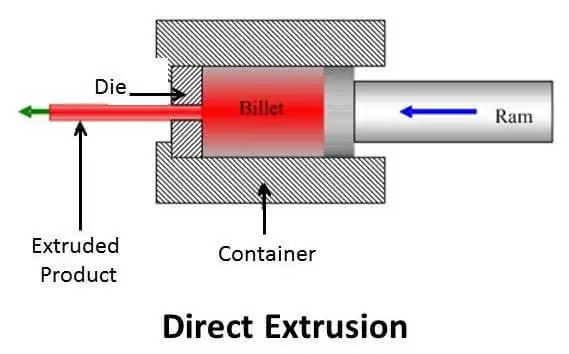
The most frequent method of extrusion is direct extrusion, commonly referred to as forwarding extrusion. The billet is placed in a container with a thick wall for operation. The billet is driven through the die using a ram or screw. A reusable false block keeps the ram and the billet apart.
The main drawback of this method is that it requires more force to extrude the billet than the indirect extrusion method since the billet must travel the entire container length, which introduces frictional forces.
As a result, the initial demand for force is the highest, gradually declining as the billet is used. Because the billet is narrow and must flow radially to exit the die, there is a significant increase in force at the end of the billet.
1B. Backward or Indirect Extrusion
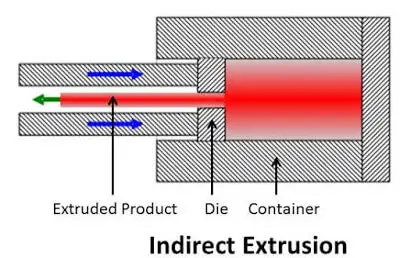
Indirect extrusion is very similar to direct extrusion; only the product is extruded through a hollow ram. The container is closed at the back, and as it moves forward, it presses the die on the billet.
There was no shifting of the billet inside the receptacle. Since the metal billet does not produce any motion in the container, there will be no friction between the walls of the container and the billet.
When the ram moves forward, the deformed metal reversely flows through the die aperture. In comparison to direct extrusion, less force is needed.
The pressure does not change with billet length. But the machinery employed is more intricate mechanically. Hydraulic presses are utilized because they reduce friction and can double as lubricants.
2. Cold Extrusion Process
Cold extrusion is carried out at relatively warm temperatures, often around room temperature. Cold pressing and cold forging are two other names for it. Using the cold extrusion process, you may extrude metals including copper, tin, titanium, steel, and aluminum alloys.
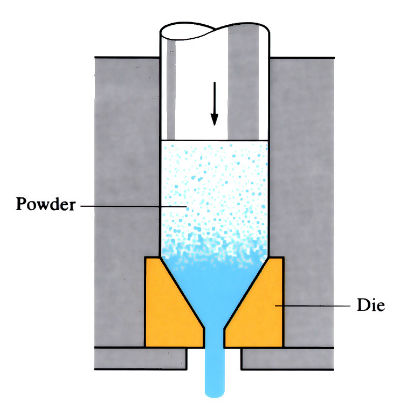
High pressure is given to the raw metal as it is fed through the die in the cold extrusion process, and the metal is then driven through the die’s cross-section. As a result, the material is extremely robust and stable.
Cylinders, car pistons, fire extinguishers, and aluminum cans are all made using this method. The mechanism requires minimal energy input and operates in a pristine, environmentally friendly setting. When compared to the hot extrusion method, no oxidation occurs.
Cold extrusion processes are classified into the following types:
2A. Impact Extrusion
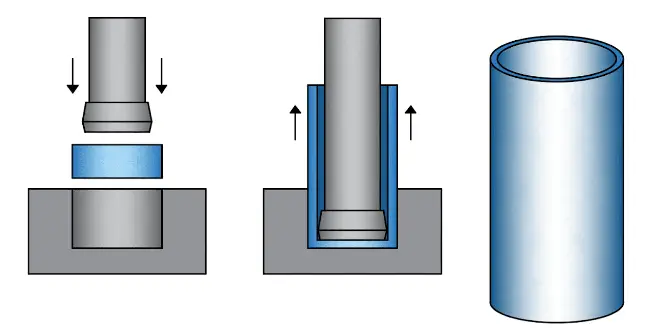
Impact extrusion is a technique that uses a press to produce metal goods and objects.
However, a metal slug must be forced through a die using the press. The metal slug is bent as it passes through the die. It enables businesses engaged in manufacturing to produce new goods and items identical in size and shape to the die they use.
Manufacturing businesses require a mechanical or hydraulic press to carry out impact extrusions. Between a punch and a die is the metal slug.
The press forces the metal slug through the die when it is actuated by lowering the punch onto the metal slug. The metal slug will then adopt the die’s physical characteristics. An ejector expels the metal slug after being driven through the die.
2B. Hydrostatic Extrusion
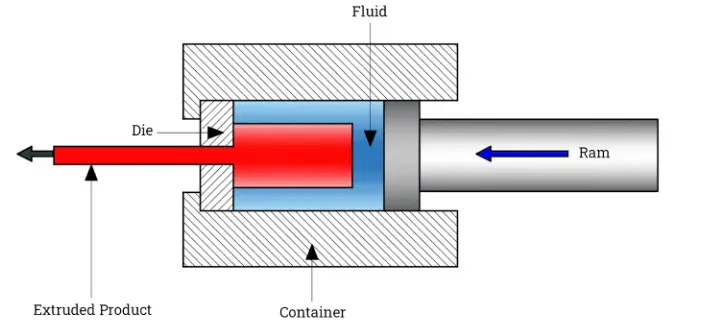
These extrusion types use fluid to provide pressure on the billet. Because the billet is not in touch with the cylinder wall or plunger, friction is avoided. Between the billet and the plunger, there is fluid. The plunger exerts a force on the fluid, which is then transferred to the billet.
Vegetable oils are commonly utilized as the fluid in hydrostatic extrusion. One side effect of this method is leakage and uncontrolled extrusion speed.
This technique can be performed hot, warm, or cold, although the fluid’s stability limits the temperature. A sealed cylinder containing the hydrostatic medium must be employed to carry out this procedure.
The fluid can be pressured in two ways. The first is constant-rate extrusion, in which a ram or plunger is employed to pressurize the fluid inside the container. Second, constant-pressure extrusion uses a pump to pressurize the fluid, maybe in conjunction with a pressure intensifier. It is then pumped into the container.
2C. Hooker Extrusion
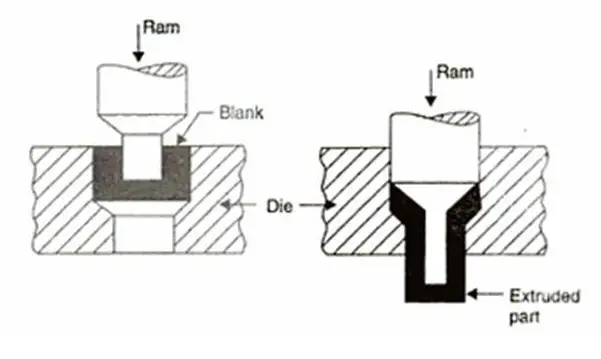
This procedure is also known as the extrusion down method. It is used to make small thin-walled seamless aluminum and copper tubes. It is done in two stages. In the first stage, the blank is formed into a cup-shaped piece. The walls of cup one are thinned and elongated in the second step. The following diagram depicts the process.
2D. Cold Extrusion Forging
Cold Extrusion forging is the same as Impact Extrusion forging. The movement of the punch or ram in this technique is slightly slower than in Impact Extrusion. The length of the extruded product is very small, but the thickness is greater when the force applied to the blank is gradually increased.
Advantages of Extrusion Process
- Extrusion allows for a wide variety of part complexity and variety to be manufactured.
- Only one pass through the extruder is required to finish the process.
- Extrusion is a straightforward procedure that can be robotized.
- The quality of an extruded product is reflected in its smooth surface, precise dimensions, and well-defined geometry.
- The extrusion method makes it simple to create items with a wide range of diameters and wall thicknesses.
- The benefits of the extrusion method cannot be achieved through rolling.
Disadvantages of Extrusion Process
- Cross-sections must be the same along the whole length of the product.
- Size differences are caused by hot material and output
- It takes a lot of force to squeeze.
- High cost to start up or set up
- Not good for small-scale production
Conclusion: Extrusion Process
The extrusion process is one of the most often used processes. It uses various materials, including metals, polymers, ceramics, etc. A hot or cold procedure might be used when superior qualities are required. It is a manufacturing molding procedure in which raw materials are forced through a pre-shaped die to produce products with a predetermined form and profile.
You may also like to read: Laser Cutting Vs CNC Cutting Machine: What’s The Difference?

